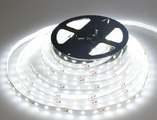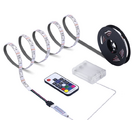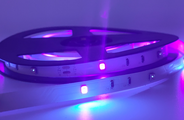How Do LED Strip Light Manufacturers Test Their Products?
When it comes to ensuring the quality and reliability of LED strip lights, rigorous testing is crucial. LED strip light manufacturers deploy a series of comprehensive tests to guarantee that every product meets or exceeds industry standards and customer expectations. Here’s an in-depth look at the testing protocols used by top manufacturers to validate the performance and durability of their LED strip lights.
Initial Material and Component Testing
Before assembly even begins, quality starts with the basics. High-grade manufacturers inspect all incoming materials and components for consistency and quality. This includes checking the purity of the aluminum used in heat sinks, the quality of the PCB (Printed Circuit Board), and the performance characteristics of the LED chips.
Specific Tests:
- LED chip testing includes measuring brightness and color temperature to ensure each batch matches specified requirements.
- PCB testing involves electrical functionality and thermal performance to prevent future failures.
In-Process Quality Checks
During manufacturing, in-line quality checks are standard. These are critical to identify issues early in the production process. Typical in-process tests include:
- Solder paste inspection to ensure correct application before component placement.
- Automated optical inspections after components are placed and soldered, checking for alignment and solder quality.
Performance Testing
Post-assembly, comprehensive performance testing is conducted. This stage tests the LED strip lights under operational conditions to simulate real-world use.
Key Performance Tests Include:
- Electrical testing to confirm power requirements and load capacities.
- Luminous efficacy testing to measure the light output per watt of energy consumed, verifying efficiency claims.
Environmental and Life-Cycle Testing
To ensure longevity and robustness, environmental and life-cycle testing is crucial. These tests simulate various environmental conditions to evaluate how the lights will perform over time in different settings.
Common Environmental Tests:
- Temperature cycling and thermal shock tests expose the LED strips to extreme temperatures to ensure they can withstand variations without failing.
- Humidity testing assesses the strips’ performance in high moisture environments, crucial for outdoor or bathroom lighting applications.

Durability and Stress Tests
Durability tests further push the product to its limits. This phase assesses the LED strip's ability to withstand physical stress and continue functioning.
Stress Testing Techniques:
- Flexibility tests for bendable LED strips to ensure they can be twisted or bent without damage.
- Vibration tests mimic transportation or operational vibrations to detect any structural weaknesses.
Final Inspection and Aging Test
Before packaging, a final inspection and aging test ensure the strips are ready for customer use. The aging test involves running the LED strip lights continuously for several hours (often up to 48 hours). This helps identify any early failures or manufacturing defects.
Why These Tests Matter
For any LED Strip Light manufacturer, the integration of these testing phases is non-negotiable. They are not just routine procedures but are pivotal in building trust with customers by delivering products that perform as promised and endure over time. By implementing such thorough testing measures, manufacturers not only uphold their reputation for quality but also ensure that their LED strip lights provide consistent, reliable, and safe illumination in any application.
In conclusion, when selecting an LED strip light manufacturer, it's wise to inquire about their testing processes. Manufacturers who transparently share their testing protocols often have a higher level of confidence in the quality and reliability of their products. This transparency is key to establishing a successful partnership and achieving lighting projects that meet both aesthetic and performance standards.





